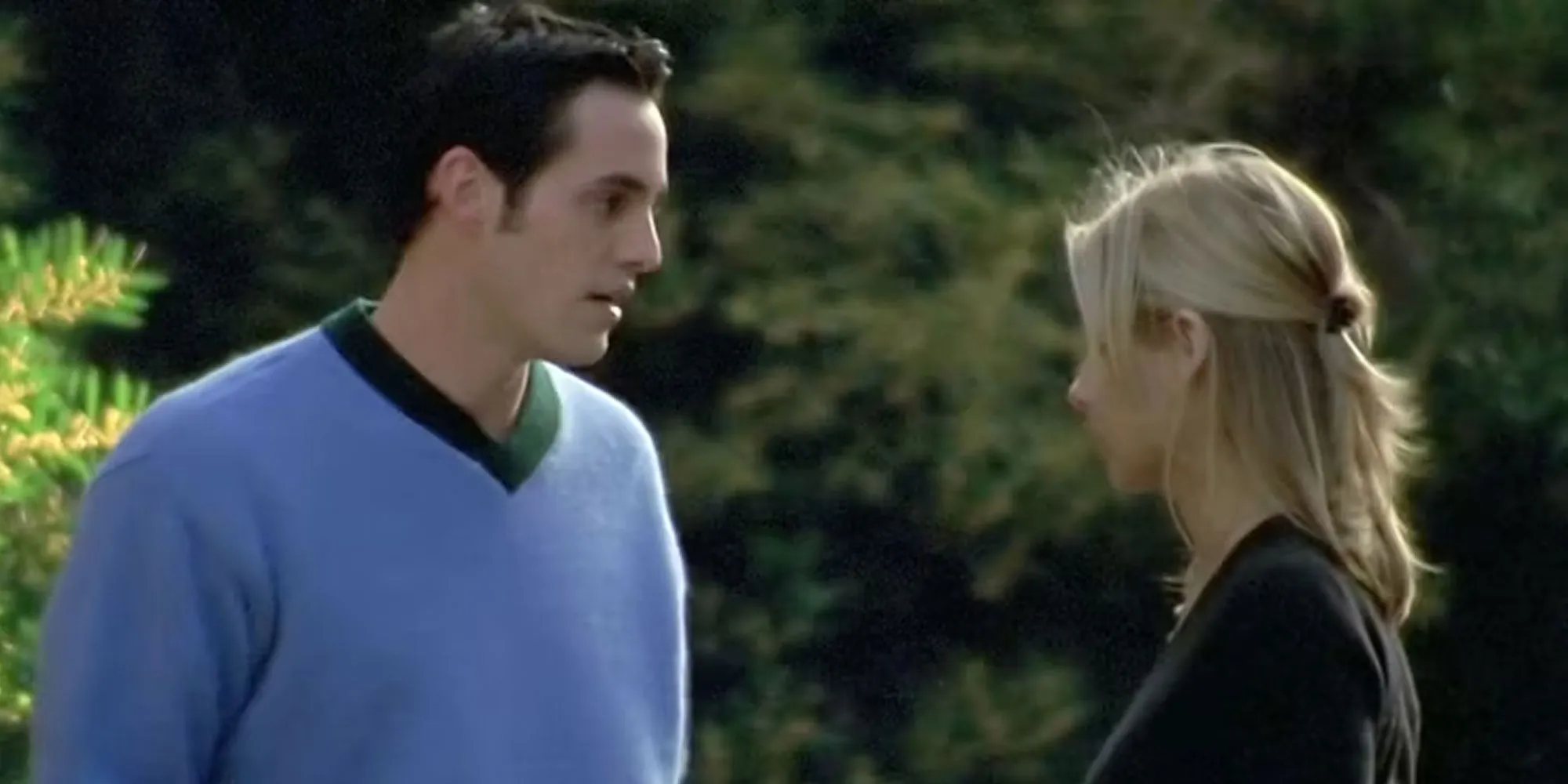
Xander Harris, portrayed by Nicholas Brendon, was a beloved character in Buffy the Vampire Slayer, yet his character arc arguably lacked the depth many fans desired. Despite having ample screen time throughout the show’s seven seasons, Xander’s evolution felt minimal. He participated in nearly every inside joke and comedic moment, contributing significantly to the show’s humor, but he seemed to stagnate as the series progressed.
Joss Whedon’s iconic series, which served as a cultural touchstone for ’90s teens, cleverly illustrated the chaos of adolescence through supernatural allegories. Sunnydale High School, where Xander and his friends navigated challenges, became an ideal setting to explore the complexities of youth against the backdrop of vampiric threats. Throughout the narrative, Xander served as the quintessential lovesick teenager, representing the struggles of unrequited love. Yet, his character development often fell flat.
Limited Evolution of Xander Throughout Buffy the Vampire Slayer
Persistent Flaws in Xander’s Character

Appearing in 143 of the 144 episodes of Buffy the Vampire Slayer, Xander’s lack of growth became increasingly apparent. His crush on Buffy was a significant plot driver in the initial season, resonating with viewers who could relate to the challenges of loving a close friend. Although his relationship with Anya offered some semblance of progression, it ultimately felt overshadowed by his lingering infatuation with Buffy.
Throughout the series, Xander often demonstrated a possessive nature toward Buffy, raising questions about his loyalty and emotional maturity. He had significant relationships with Willow, Cordelia, and Anya, yet his connection to Buffy remained a pivotal aspect of his identity. Rather than evolving into a more skilled and supportive member of the Scooby Gang, he often played the role of comic relief, without gaining substantial supernatural abilities or competence.
Exploring Xander’s Untapped Potential
The Need for Deeper Character Development


Throughout the series, it became evident that Xander’s dynamics with Buffy could have been fleshed out to create a stronger emotional resonance within the narrative. If Xander’s character had been granted more moments of bravery and growth, it would have enriched the storyline and his relationships with the group. His role often felt relegated to that of a comic foil rather than a well-rounded hero.
Furthermore, if Xander had been able to transcend his obsession with Buffy, showcasing his qualities as a dedicated partner, audience engagement in his romantic plots would have likely deepened. His earlier actions, such as the unethical hyena spirit possession and problematic love spell, overshadowed his sympathetic traits and prevented viewers from fully empathizing with him.
Xander’s Character in the Buffy Comics
Xander’s Evolution in the Comics

Interestingly, Xander’s character experienced a renaissance in the comic adaptations following the original series. Although he may not have captured the spotlight in the show, the comics, published by Dark Horse, allowed Xander to grow and redefine himself in fascinating ways. Notably, Xander’s arc transitioned him beyond his past infatuation with Buffy, leading to an unexpected relationship with Dawn and even fatherhood.
The comics were crafted under the supervision of Joss Whedon, who highlighted Xander’s potential in ways that the television series failed to achieve. Fans who engaged with these stories discovered pivotal moments centered around Xander, showcasing deeper characterization and development.
Despite rumors of a new Buffy the Vampire Slayer series announced in 2018, the future of the franchise remains uncertain. Should a reboot occur, it is crucial for the narrative to explore key elements from the comics, including Xander’s transformation into a vampire. This shift highlighted his inherent complexities and showcased the potential depth of his character, transforming him from a mere sidekick into a multifaceted individual who grapples with ambition and moral ambiguity.




Leave a Reply